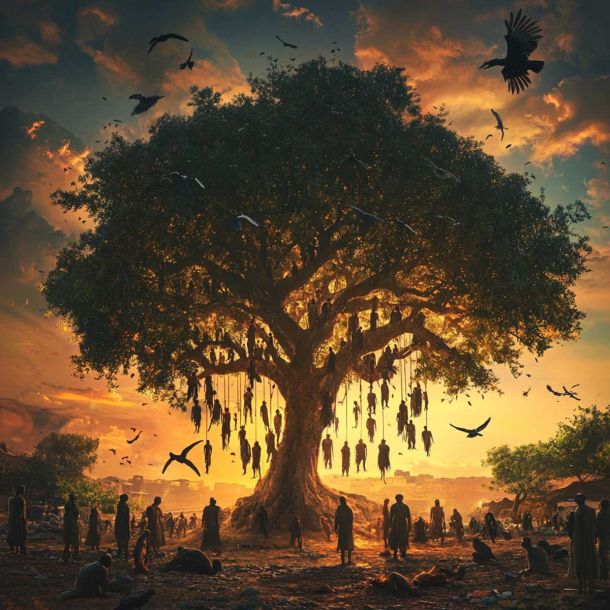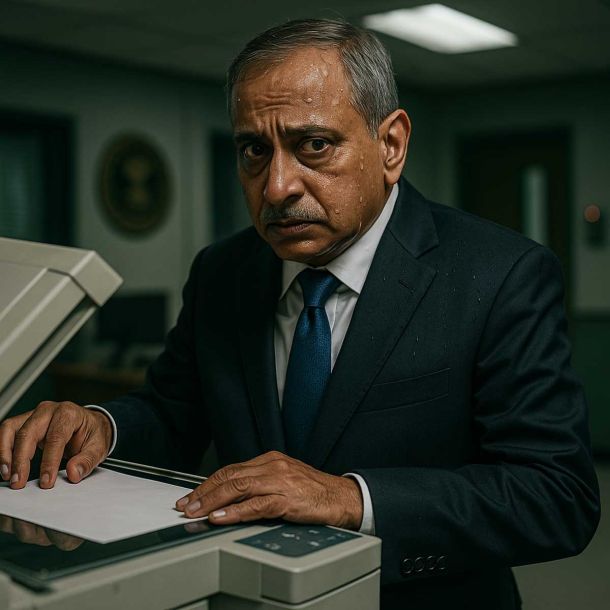MORE COVERAGE
Twitter Coverage
Satyaagrah
Written on
Satyaagrah
Written on
Satyaagrah
Written on
Satyaagrah
Written on
Satyaagrah
Written on
JOIN SATYAAGRAH SOCIAL MEDIA
"What's more confrontational than thugs and criminals looting our history?": Land Jihad - a 2300-year-old historical Ashoka edict has been converted into a Mazar of a Sufi saint over time, and prayers are being offered after covering it with a green cloth

A fresh example of Land Jihad has emerged in Bihar, where a historical site, an Ashoka edict has been converted into a Mazar over time. More than 2300-year-old Ashoka edict has been made into a Mazar, and prayers are being offered at the site after it has been covered with a green cloth.
|
Ashoka the Great embossed the edict 2300 years ago in the natural cavern of Chandan Hill of the Kaimur hill range at Sasaram, the headquarters of Bihar’s Rohtas district. This inscription is in Brahmi script, and it is one of just eight in the country. This inscription is listed among them, and it is the sole inscription from Bihar.
The inscription has been encircled by unlawful construction around it. The inscription has been made a Mazar now by covering it with a green cloth after it had been coated with white lime. An annual Urs is also being organised there by declaring it as the tomb of a Sufi saint. The gate of the monument is kept closed following this illegal construction.
In the years following independence, the Archaeological Survey of India (ASI) designated this edict as a protected monument in 2008. The ASI had also put up a conservation board near the inscription at Kandara, which is located about 20 feet below the top of the Ashiqpur hill in the Kaimur hill range between Sasaram city’s old Grand Trunk Road (GT Road) and the new bypass. However, the encroachers removed the board.
|
In 2008, 2012, and 2018, the ASI ordered that the encroachments surrounding the Ashoka edict be removed by the District Magistrate (DM). Following this, the District Magistrate directed the SDM of Sasaram to take appropriate action. The SDM had ordered the Markazi Muharram Committee, which had illegally encroached on the site, to immediately hand over the key to the administration, but the committee refused. A large structure was gradually constructed illegally there.
During the British Raj, this inscription was rediscovered in 1917. The Archaeological Survey of India (ASI) has addressed over 20 letters to the district administration requesting that the status quo on this site be maintained, however, attempts are being made to obliterate the trace of this monument.
Emperor Ashoka carved this edict in eight locations around the nation in 256 BC. One of them is on Sasaram’s Chandan hill. Ashoka had these inscriptions engraved in various locations to promote the teachings of Buddhism. Brahmi was the people’s language at the time and as a result, these messages were written in that language.
A similar incident recently occurred in Maharashtra, where Shivaji Maharaj’s ‘Lohagarh’ fort was unlawfully encroached and proclaimed to be the grave of an alleged Sufi saint named ‘Umar Shahawali Baba.’ Following that, the annual Urs (fair) was also held there.
Historians argue that there was no tomb or mosque there even during the reign of Chhatrapati Shahuji Maharaj. It was later formed as a result of unlawful occupancy. It is not, however, restricted to Sasaram and Lohagarh Fort. Such tombs can be seen from Ajmer fort to all the forts in the country and places of historic Hindu heritage. Locals claim that attempts are being made to seize such structures by illegally encroaching on them.
|
Photograph of the first half of the Asoka Edict at Sasaram, taken by Alexander Caddy in 1895. View of a portion of the edict found ''In a small cave now called Chiragh-dan or lamp-room of Pir Chandan Shahid, and some 30 feet to the west of the Shahid''s grave, which is situated on the summit of the Chandan Pir Hill some 3 miles east of the town.'' (Kuraishi, op. cit., p. 183). Ashoka (reigned ca. 272-231 BC) was the most illustrious king of the Maurya dynasty. After his conquest of Kalinga in Orissa, struck with remorse at the suffering he caused, he converted to Buddhism and spent the rest of his life propagating his dharma (law). In order to achieve this, he had numerous edicts inscribed on rocks, pillars, and caves, throughout his vast empire. These are written in various vernaculars and represent the earliest written document from the Indic regions. From these edicts, it appears that Ashoka was an extremely tolerant and benevolent monarch. In the 'List of Ancient Monuments...of Bihar and Orissa' of 1931, M.M.H. Kuraishi wrote, "The Asoka inscription at Sassaram contains one of the earliest edicts of that Emperor (Minor Rock Edict I). It is engraved on a small boulder and consists of 8 lines in archaic Brahmi characters...A portion of the inscription is damaged."
The Characteristics of Ashokan Inscriptions
The inscriptions of Ashoka are recovered from various sites and are broadly classified into Rock Edicts, Minor Rock Edicts, Pillar Edicts, Minor Pillar Edicts, and Cave Inscriptions for the convenience of study. The last inscription recovered at Ratanpurwa is numbered 18th in the class of Minor Rock Edict. The earlier seventeen being - (1) Sasaram or Sahasram in the Rohtas district of Bihar; (2) Ahraura in the Mirzapur district of Uttar Pradesh; (3) Rupnath in the Jabalpur district of Madhya Pradesh; (4) Gujarra in the Datia district of Madhya Pradesh; (5) Pangurariya in the Sehore district of Madhya Pradesh; (6) Bahapur near Delhi, (7) Bairat in the Jaipur district of Rajasthan; (8) Maski, (9) Gavimath and (10) Palkigundu, all in the Raichur district of Karnataka; (11) Siddapur, (12) Brahmagiri and (13) Jatinga-Rameshwar, all in the Chitaldrug district of Karnataka; (14) Nittur and (15) Udegolam, both in the Bellary district of Karnataka; (16) Erragudi and (17) Rajula Mandagiri, both in the Kurnool district of Andhra Pradesh. This 18th Minor Rock Edict of Ashoka from Ratanpurwa is located in the Bhabhua district of Bihar.
Besides the four scripts, i.e. Brahmi, Kharoshthi, Greek, and Aramaic, Ashoka used three languages in his inscriptions, viz. Aramaic, Greek, and Pali/Prakrit to communicate his messages to the subject residing in different regions and understanding different scripts and languages within his vast empire. All his inscriptions recovered within the fringe of present India are found to be engraved in Brahmi script and Pali/Prakrit Language (with regional variations), including this new inscription from Ratanpurwa.
The Ashokan inscriptions are further classified broadly into two types on the basis of contents: (i) Buddhist (those meant exclusively for the Buddhist monks and Buddhist lay devotees) and (ii) Non-Buddhist (those propagating his policy of Dhamma and aimed at the people in general). This inscription essentially belongs to the first type.
References:
 Support Us
Support Us
Satyagraha was born from the heart of our land, with an undying aim to unveil the true essence of Bharat. It seeks to illuminate the hidden tales of our valiant freedom fighters and the rich chronicles that haven't yet sung their complete melody in the mainstream.
While platforms like NDTV and 'The Wire' effortlessly garner funds under the banner of safeguarding democracy, we at Satyagraha walk a different path. Our strength and resonance come from you. In this journey to weave a stronger Bharat, every little contribution amplifies our voice. Let's come together, contribute as you can, and champion the true spirit of our nation.
 |  |  |
| ICICI Bank of Satyaagrah | Razorpay Bank of Satyaagrah | PayPal Bank of Satyaagrah - For International Payments |
If all above doesn't work, then try the LINK below:
Please share the article on other platforms
DISCLAIMER: The author is solely responsible for the views expressed in this article. The author carries the responsibility for citing and/or licensing of images utilized within the text. The website also frequently uses non-commercial images for representational purposes only in line with the article. We are not responsible for the authenticity of such images. If some images have a copyright issue, we request the person/entity to contact us at This email address is being protected from spambots. You need JavaScript enabled to view it. and we will take the necessary actions to resolve the issue.
Related Articles
- "Don't be misled by those who claim Land Jihad doesn't exist, because He does": Tamil Nadu Waqf Board formed by a religion of 1400 years old now claims ownership of 7 Hindu-majority villages and a 1500-year-old temple; villagers show docs to counter claim
- How Jihad a fight against the enemies of Islam is turning into every damn thing that kafir knows from love, thook, land, halal to institution one: Story of conversion from Gujarat – Pooja survived to tell the tale
- Another Grooming jihad of a 19-year-old Christian girl Emily by Shahjahan who traps non-Muslim women through narcotics and threats reported: Emily allegedly shifted to a radicalization center in Kayamkulam
- Islamists are raging Land Jihad by encroaching iconic Maharashtra forts through illegal constructions within the premises, falsifying history by inventing fictional characters
- From slum kingpin to handcuffed fugitive, Lalla Bihari turned Gujarat’s Chandola Lake into a hub for over 500 illegal Bangladeshis, earning ₹5 crore monthly, until forged documents, AMC's bulldozers, and a dramatic Rajasthan arrest ended his reign
- "Critical Hour Approaches": BJP Rajya Sabha MP Harnath Singh Yadav has proposed a bill to repeal the Waqf Act of 1995 brought in by Congress, the introduction of the bill was approved after 53 members voted in favour while 32 opposed the move
- Our Sisters and Daughters has to face Hell just because we choose to ignore the reality ourselves - Of fear or favour, we need to understand the reason why Hindu women seldom speak out on the atrocities unleashed upon them in grooming jihad
- Sensational revelation, Pakistan based Islamic organisation Dawat-e-Islami has huge support in Ahmedabad and gets money from over 2000 donation boxes to brainwash Muslim youth and inspire terror activities
- "From deceit to defeat": Justice prevails for national shooter Tara Shahdeo after a 9-year battle, Raqibul Hasan faces life sentence for deceit and forced conversion, spotlighting perils of love jihad and affirming faith in the judiciary
- "Our ability to manufacture fraud now exceeds our ability to detect it": In a massive expose of deceit and Land Jihad, Congress Govt secretly gifted 123 prime Lutyens properties worth ‘hundreds of crores’ to the WAQF Board just before the 2014 Elections
- While Hindus are at rest, one peaceful community is working overtime under the sentiments of Land Jihad to bring Indian Railways under Waqf Board
- Photos of dozens of Hindu girls found circled in a house illegally occupied by Bangladeshi Rohingyas and converted into a mosque in Bilaspur; according to reports, a Hindu activist team discovered the mosque while searching for a missing minor Hindu girl
- Jihad Recruitment going on in Madrassas forced the Assam government to cease hundreds of them
- Rajasthan Board of Muslim Waqf despite being land-rich itself turns to the State government for financial assistance in order to pay its workers’ salaries
- In another incident of ‘Land Jihad' how property in Shiv Shakti society of Mora, Surat, came in possession of Waqf Board: Gandhinagar based trust claims that Board is illegally taking over properties by misusing the Waqf Act, 1995



























